Introduction
Follow along as we share our week-long adventure through Pembrokeshire, a region in southwest Wales known for its stunning coastlines, fascinating historical sites, and picturesque landscapes. This Easter trip was packed with a mix of activities, from exploring ancient castles and ruins to observing wildlife and taking in the breathtaking views of coastal trails. Our journey included visits to iconic places like Powis Castle, St David’s Cathedral, and Ramsey Island RSPB reserve, as well as stops in hidden gems like the Llanllawer Holy Well and St David’s birthplace. Let’s dive into the details of our week-long expedition.
Day One: Exploring Powis Castle and its Beautiful Gardens
Our journey began at Powis Castle, a fortress originally built in the 13th century and later expanded in the 17th century. The castle boasts an extensive history, having been home to several influential families who left their mark on the property.
One of the highlights of our visit was exploring the castle’s stunning gardens, designed in the 17th century. We were particularly intrigued by the Plunge Pool, built in the 1770s and full of cold water. The 1st Earl, Henry Arthur, was advised by Robert Clive (Clive of India) that the inclusion of a cold bath in the gardens may be beneficial to his health. In the 18th century, it was believed that exercise followed by a brief plunge into a cold bath was beneficial for one’s health, and having a plunge pool outdoors enabled users to enjoy fresh air and the beautiful landscapes.
After visiting Powis Castle, we headed to the coast and our cottage in Dinas Cross, eager for the adventures to come.
Day 2: Coastal Walks and Beach Fun at Aber Bach
We began our Sunday morning with a walk to Aber Bach beach, where the children enjoyed playing on the pebbly shore while I took the chance to do some reading. Upon returning to the cottage, the Easter Bunny had set up a trail for the kids to follow in the large garden.
In the afternoon, we took the bikes and explored another local beach at Pwllgwaelod. The highlight of our excursion was watching a red kite soar overhead. The only challenge was the uphill return journey, but it was well worth the effort.
Day 3: Biking Adventures and the Llanllawer Holy Well
With a rainy forecast for the day, we spent the morning indoors with the kids drawing and reading, while I practiced yoga. In the afternoon, we ventured out on our bikes to explore the hill behind our cottage. After a steep climb, we were rewarded with amazing views of the settlement and the sea.
Our bike ride took us through the picturesque Cwm Gwaun valley and onto Llanychaer, where we discovered the Llanllawer Holy Well. The well, which has a stone vault protecting its source, has been a place of healing and rejuvenation for centuries. The waters from this well are known to be rich in beneficial minerals, further fuelling its mystical reputation.
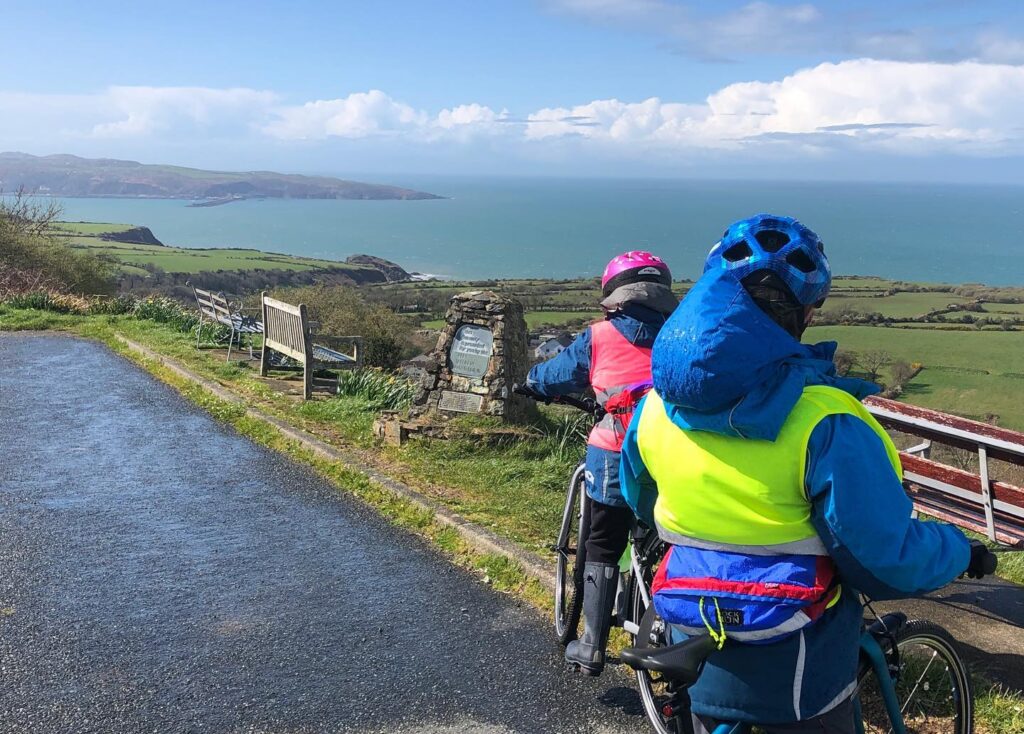
Day 4: St. David’s Cathedral, Bishop’s Palace, and a Visit to the RNLI Station
On a rainy Tuesday morning, we bundled up and headed to the picturesque coast of St. Justinian’s. Though the weather was less than ideal, it didn’t dampen our spirits. After enjoying some sandwiches sheltered above the lifeboat station, we were thrilled to discover that the St. David’s RNLI station was open for visitors.
During our visit, we learned about the essential work that the volunteer-run charity does to save lives at sea. The crew at St. David’s RNLI station was warm and welcoming, giving us a tour of the state-of-the-art boat and its impressive technology.
Undeterred by the persistent rain, we continued our exploration, visiting the nearby Porth Clais and St. David’s, the smallest city in Britain. Our first stop was the atmospheric ruins of the Bishop’s Palace. This medieval palace was once a grand residence for the bishops and a site of lavish feasts. Though now in ruins, the palace still exudes a sense of awe and wonder.
From the palace, we crossed a stream to visit the stunning St. David’s Cathedral. As we spent time taking in the beauty and tranquility of this sacred space, we were particularly captivated by the Shrine of St. David, located in the Holy Trinity Chapel. This ornate and beautifully crafted shrine has been a pilgrimage site for centuries and is said to contain the bones of the patron saint himself.
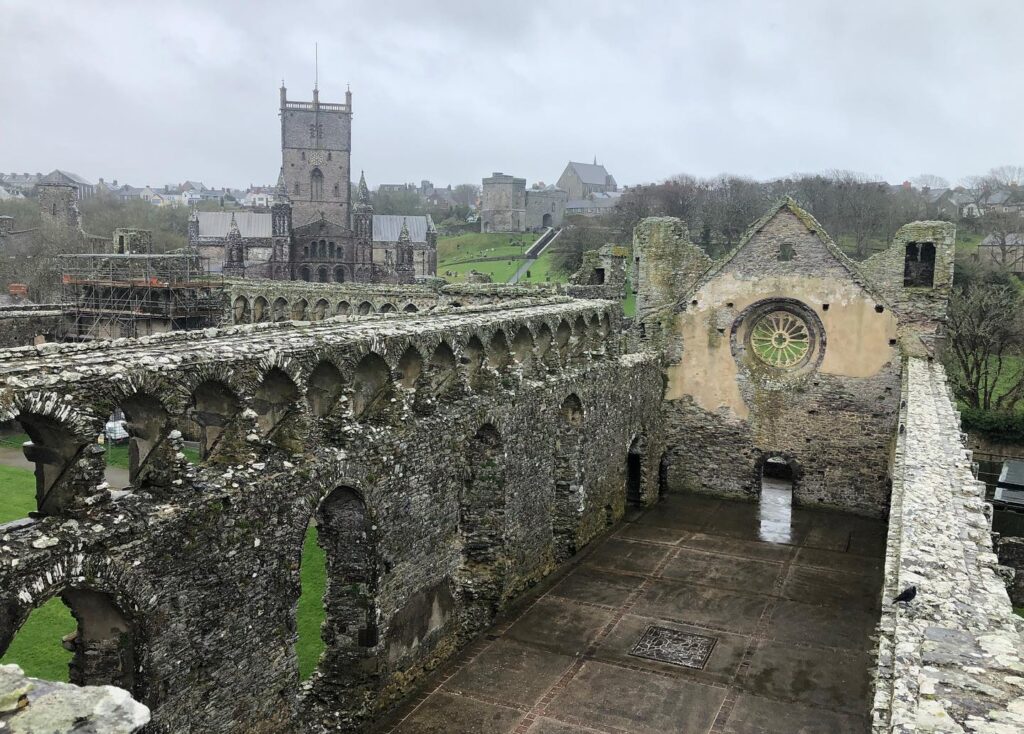
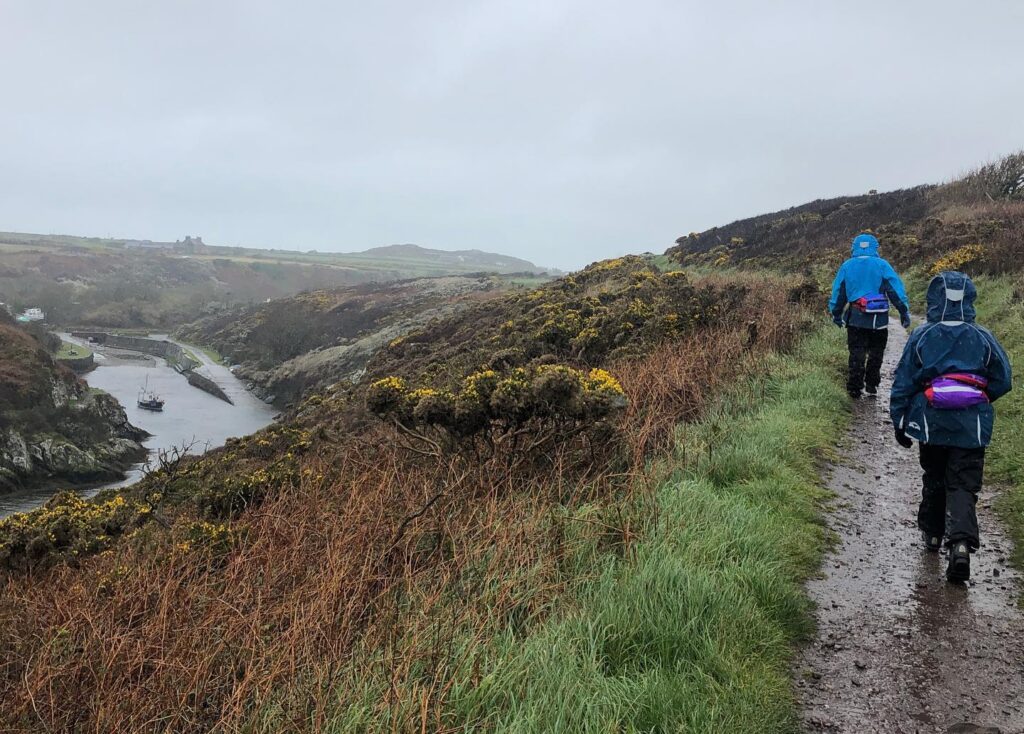
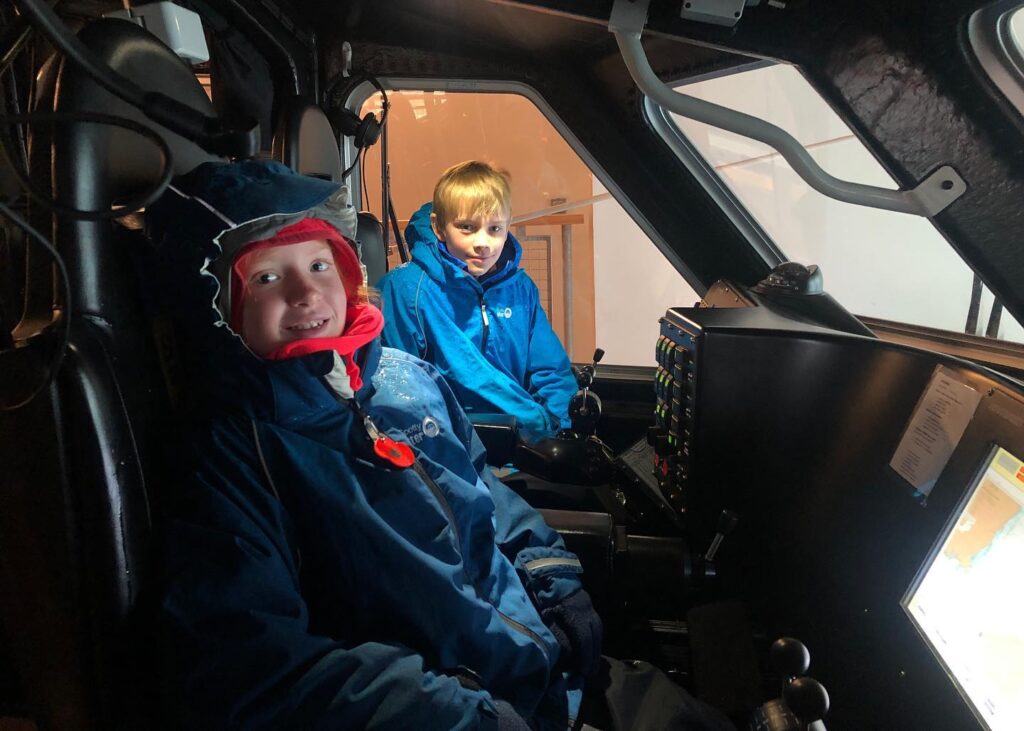
Day 5: Braving the Storm on Dinas Island
Despite the stormy weather, we embraced the adventure and ventured to the edges of Dinas Island for a run between two beaches. We stopped by the dramatic remains of St. Brynach’s church, which had been partially washed out to sea in the 19th century, before continuing on to Pwllgwaelod.

Day 6: Exploring the Birthplace of St. David and Ramsey Sound
The end of the rain brought renewed excitement, as we set out for Ramsey Island and the RSPB reserve. However, lingering storm effects meant our boat crossing would have to wait as the boat crossing was postponed a day. Instead, we embarked on a coastal walk from the National Trust car park at Porth Clais to St. Non’s, the birthplace of St. David. This site, steeped in legend and history, is now home to a church and holy well.
Our journey on foot continued around the coast towards Ramsey Sound, with a delightful stop at Porthlysgi Bay where the kids played on the beach. Though the walk was long, it was well worth the effort for the breathtaking views and sense of adventure.
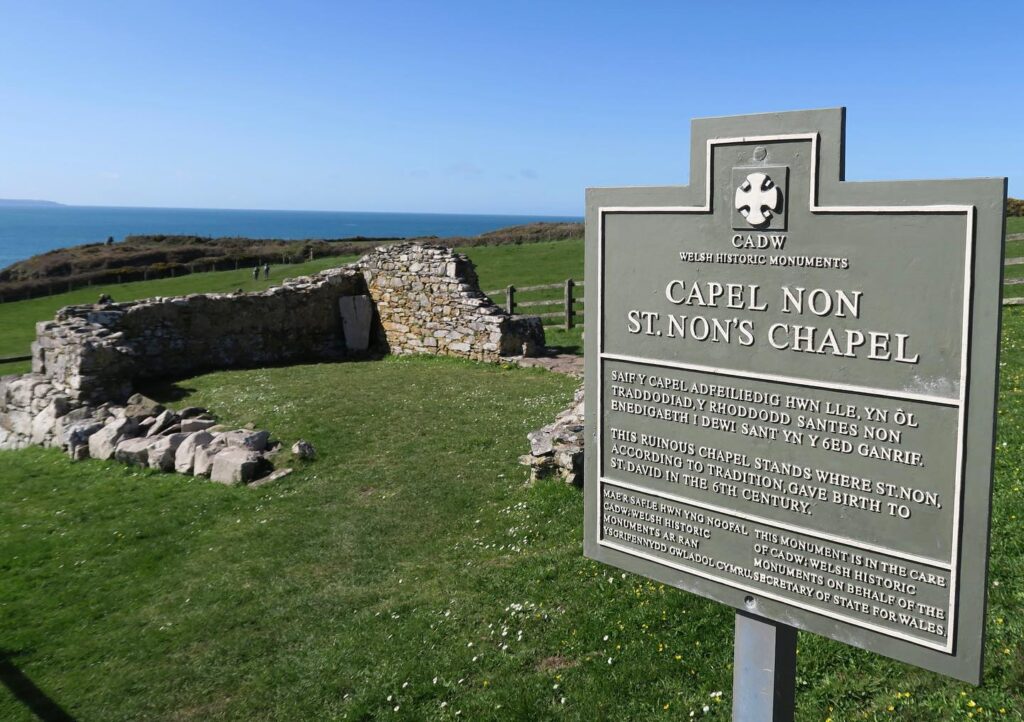
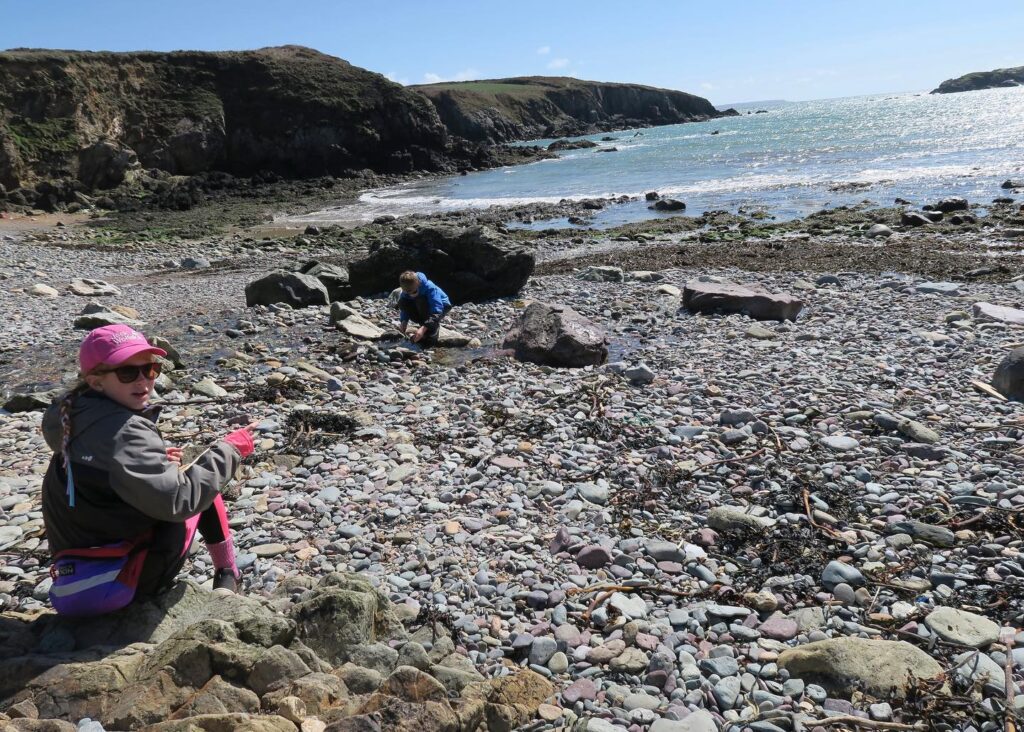
Day 7: A Trip to Ramsey Island RSPB Reserve
As the sun rose on our fourth day, we were filled with anticipation for our visit to Ramsey Island RSPB reserve. After a hearty breakfast, we headed to St. Justinians, where we boarded a boat to take us to the island. The boat ride itself was an adventure, as we cruised across, marveling at the rugged coastline and soaring cliffs.
Upon setting foot on Ramsey Island, we were greeted by the two RSPB wardens, who gave us a brief introduction to the island’s wildlife and conservation efforts. We then set off to explore the three hills that make up the island, taking in the breathtaking views of the surrounding sea and mainland Pembrokeshire.
One of the highlights of our visit was the incredible array of wildlife that we encountered. We spotted several bird species, including Choughs and Wheatears, as well as the island’s resident deer and ponies. The sight of seals basking on the beach or playfully swimming in the surf was a particular delight, as we watched these graceful creatures through our binoculars enjoying their natural habitat.
Ramsey Island’s seabird colonies were an absolute treat for bird enthusiasts. We saw Gannets diving for fish, their streamlined bodies slicing through the water, and were captivated by the comings and goings of countless other seabirds. It was a day filled with unforgettable encounters with nature.
As our time on the island drew to a close, we returned to St. Justinians feeling invigorated and grateful for the opportunity to experience the wonder of Ramsey Island RSPB reserve. We decided to celebrate our adventure by donning our wetsuits and taking a refreshing dip in the waters of Porth Clais harbour.

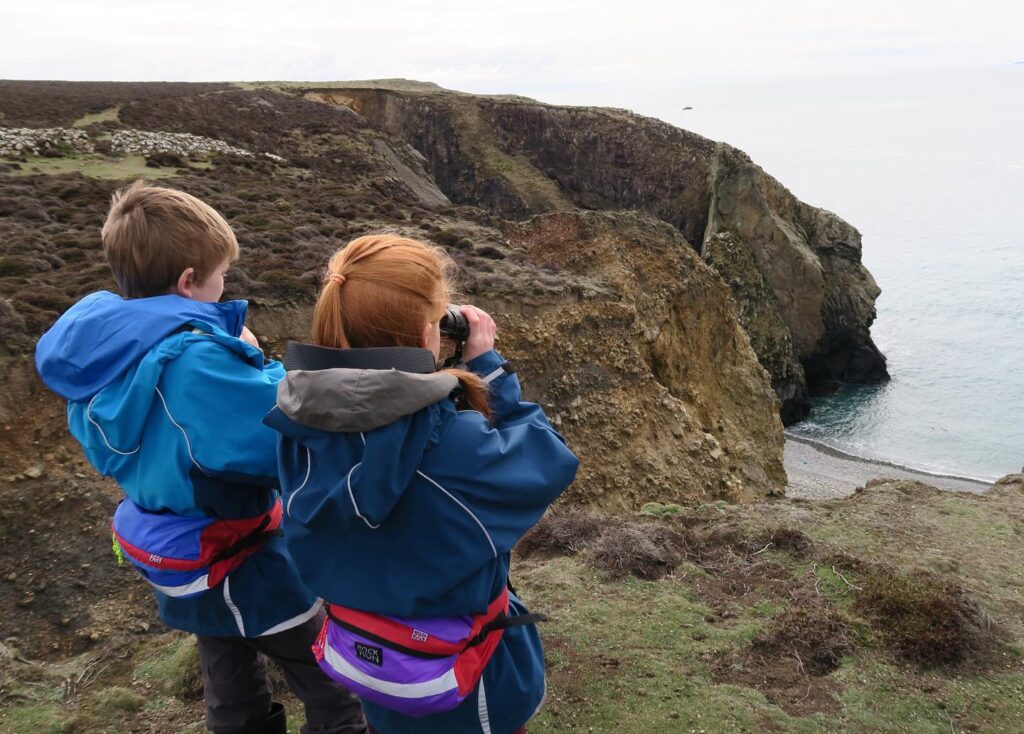

Day 8: Homeward Bound and an Overnight Stop in Shrewsbury
Our Pembrokeshire adventure came to an end, and it was time to pack our bags and begin the journey home. However, we had planned a night’s stopover in the picturesque town of Shrewsbury, which allowed us to break up the journey and explore a bit more of this area.
Upon arriving in Shrewsbury, we checked into our accommodation and enjoyed an evening walk along the banks of the River Severn. The peaceful setting was the perfect way to unwind after a day of travel.
Day 9: Attingham Park and the Journey Home
On our final day, we set out to explore Attingham Park, a stunning National Trust estate in Shropshire. Our visit began in the deer park, where we were enchanted by the sight of a herd of deer grazing amidst the rolling landscape. A memorial to the estate’s last owner served as a reminder of the property’s long and storied history.
Next, we toured Attingham House, an elegant Georgian mansion filled with exquisite furnishings and artwork. It was a fascinating journey through time, as we learned about the lives of the people who once called the house their home.
The walled garden provided a peaceful sanctuary, where we admired the colourful blooms and abundant produce. It was clear that the gardeners had poured their hearts into creating this beautiful space.
Our visit concluded with some playtime in the Attingham play park where the children enjoyed the swings and climbing structures. It was a fitting end to a fantastic adventure.
With our time in Attingham Park drawing to a close, we embarked on the final leg of our journey home. The memories of our incredible Pembrokeshire adventure, and the beauty of the places we’d visited, would stay with us long after the mountains of laundry and bike cleaning were complete.